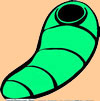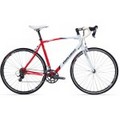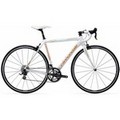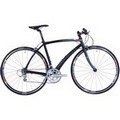

The diversity of sleeping bags on the market is quite overwhelming.
And choosing the proper bag for bicycling just makes the decision more complicated. Do you choose down or synthetic fill? What about the temperature ratings?
Sleeping bags may look similar from the outside, but what is underneath the shell can make or break a good night sleep.
What Do You Want To Know About Sleeping Bags for Bicycle Camping?
Comfort Rating Down or Synthetic
Shape/Size Other Features
Comfort Rating
One of the most confusing question that many people have when buying a lightweight sleeping bag is the comfort or temperature rating. The manufacture assigns this rating based on certain criteria. Unfortunately, the methodology that each manufacturer uses to rate their bags varies drastically. I have used bags of similar ratings under similar weather conditions and my comfort level was quite different. So what were the differences to cause such variations?
Some manufacturers rate their sleeping bags based on the season for intended use: summer, 3 season (spring, summer and fall), winter, and extreme winter. This methodology offers minimal help since weather conditions vary drastically depending on your camping site location. Others use a temperature rating: 35°F and higher, 10°F to 35°F, -10°F to 10°F, and -10°F and lower for example. Such temperature range ratings help you to narrow your selection down better. Sticking by these ratings only, however, can prove unreliable unless you factor other considerations into your decision.
For me, I am a “warm sleeper”. I know this because I try to keep my house temperature as low as possible at night and I use minimum blankets. Otherwise, I wake up at night hot, sweating, and very uncomfortable. Some people are “cold sleepers”. They dress in sweats, pile blankets on, and still they may be cold. So if I am a “warm sleeper” a sleeping bag rating of 35°F and above may handle a low temperature of 25°F for me. Someone else using the same bag my shiver all night at 45°F.
Another factor in the temperature rating equation will be the type of tent you are using. If you are sleeping under the stars or just a tarp, wind chill will definitely affect the temperature rating of your bag. The same applies if you are sleeping in a tent with a rainfly: the tent will eliminate most wind chill effects and assist with holding in some of your body heat. Unfortunately, if your tent is not ventilated properly, the moisture build up from your body and breath will affect your comfort.
Your gender, amount of food in your stomach, and your hydration level can also effect how much heat your body produces. Women usually prefer bags with a lower temperature rating since they tend to be more “cold sleepers” than men. Also, digestion and hydration tend to increase your body heat.
When you lie inside a sleeping bag, the top layer lofts up but the bottom layer compresses. This compression reduces the effectiveness of the bag. Most manufacturers calculate some kind of addition padding or insulation underneath your bag for protection from a cold ground. You should use a compression padding underneath your bag for this protection.
If you are going to be camping in different temperatures, I suggest that you buy a sleeping bag that covers the minimum temperature that you expect. You should still figure in the “warm or cold sleeper” and your tent configuration factors. Remember that you can always unzip your bag, wear extra dry clothing at night, or modify your tent to suit the weather. And something that I always carry with me is a bag liner made of cotton or silk. This liner keeps me from getting dirt and moisture on the bag itself, is easier to keep clean and dry, and helps to lower the bag rating if needed. Sometime I sleep just using the liner in very warm climates.
Down or Synthetic
Another big and confusing question. The type and amount of insulation inside a sleeping bag determines the warmth factor by how much “loft” the bag develops. In general, the more inches of loft that surrounds you, then the warmer you will be. For maximum loft, look for a bag with a differential cut, one in which the inner lining is smaller than the outer shell. Also, the type of insulation affects the warmth-to-weight ratio, compressibility, and the durability of your bag. So you want the lightest sleeping bag as possible that will handle the temperature range of your camping trip.
- Down: This fiber comes from the undercoating beneath the outer feathers of geese and ducks. Goose down offers the best loft of the two types. Compared to any other types of filling, down has the highest warmth-to-weight ratio for sleeping bags. It is surprisingly lightweight, can be compressed to a very compact size, and lofts to the maximum. This natural material outperforms all synthetic insulation materials on the market today.Now for the bad news: Some people are allergic to the fibers and it is very expensive. Also it it gets wet, its lofting ability is almost nil. And it can take forever to dry naturally in the field. So for dry, cold environments like desert camping or high mountains, it is ideal. But for normally weather variations, you will be better off choosing one of the advance synthetic materials.
- Synthetic Materials: Some of the advance extruded polymer threads used in sleeping bags provide some of the best overall insulation materials. The most frequently used synthetic fills are Duofill ™ and Hollofil™. Most of these threads are hollow, thus reducing weight for a light, cost-effective, and an efficient filling. The material is non-allergenic and provides a significant amount of insulation efficiency even when wet. And it is quicker to dry out than down.
Synthetic materials do have a few negatives. The compressibility and amount of loft per weight is less than down. So a synthetic bag with the same insulation ability will be heavier and bulkier than a comparable down bag. Also, synthetic fibers will degrade over time, which is something that down fibers don’t share.
So to sum up, I believe that synthetic insulation is a good all around choice for most bicycle camping. Yes, these bags can be heavier than a similar down bag. If you, however, choose the right bag, figuring in the factors I discussed above, for your camping style and weather, then synthetic bags are an excellent choice. Down always beats out synthetic materials for weight and compressibility, but the modern synthetic fiber are narrowing the gap each year. So if you still choose a down bag, which a superior product, just make sure that you transport the bag in a completely weather-proof sack and sleep where there will be no chance of getting wet.
Shape/Size
Your sleeping habits and body type should help determine the type of sleeping bag that you choose.
- Mummy Bag:The wide at the shoulders and tapered at the feet mummy shape is the most efficient for weight-to-warmth ratio. Many people, however, feel confined in these bags. You need to choose a size that has a shoulder and hip girth sufficient enough for you to feel comfortable. The length of the bag must be sufficient for your height. Also, you want your shoulders completely inside the bag and the collar to fit around your head. Many women’s mummy bags are cut wider through the hip and torso area and come in shorter lengths.Very extreme temperature and ultra-lightweight bags will have the minimum girth. Most of the warmer weather bags have more room in these areas. Usually a mummy bag will not zip to a companion bag.
- Rectangular and Semi-Rectangular Bags: These bags offer significantly more room to move around in at night. The semi-rectangular bags will have a tapered foot to trap more heat and keep the bag weight down. Many of these models allow two bags to be zippered together to form a double bag. You just need to make sure that the two bags are companion bags. These bags are good when weight is not a crucial factor and when mummy bags may be too confining. Unfortunately, these bags don’t have the enclosing collars that mummy bags use for the coldest weather.
Other Features
When buying a sleeping bag, there are some features that may be significant for a comfortable night sleep.
- Shell and liner: Most bags have an outer shell made of nylon, polyester, or taffeta. This material breathes fairly well but doesn’t resist moisture. Some bags use ripstop nylon for more durability. The liner may be made from the same material as the shell material. You can get some bags with brushed linings, but they tend to trap heat and may be too warm against your body. I prefer to add a silk or cotton liner to keep the bag free from dirt and body moisture. Too much of a liner may trap moisture since the bag won’t be able to breathe properly.
- Zippers: You will want a two-way zipper (opens from top and bottom) to allow better ventilation. If you want two bags to zip together, you will need to buy a companion bag to yours.
- Draft collar: An insulated collar prevents heat loss from around your neck and shoulder. Most mummy bags include a draft collar; rectangular and semi-rectangular bags normally do not.
- Miscellaneous: If you feet are prone to be cold, you can buy bags with extra insulation in the foot area. Also, some bags have lots of insulation in the head area for cushioning. Some have pockets for small items.




You should put brands and models, like in your tent section, please?